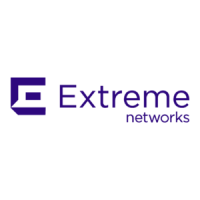ExtremeWare XOS 11.3 Concepts Guide
495
23 IPv4 Unicast Routing
This chapter describes the following IPv4 topics:
● Overview of IPv4 Unicast Routing on page 495
● Proxy ARP on page 499
● Relative Route Priorities on page 498
● Configuring IPv4 Unicast Routing on page 500
● Verifying the IPv4 Unicast Routing Configuration on page 501
● Routing Configuration Example on page 501
● IPv4 Multinetting on page 503
● Configuring DHCP/BOOTP Relay on page 509
● UDP Forwarding on page 511
This chapter assumes that you are already familiar with IP unicast routing. If not, refer to the following
publications for additional information:
● RFC 1256—ICMP Router Discovery Messages
● RFC 1812—Requirements for IP Version 4 Routers
NOTE
For more information on interior gateway protocols, see Chapter 25, RIP or Chapter 27, OSPF. For information on
exterior gateway protocols, see Chapter 29, Border Gateway Protocol. For more information on switch support for
IPv6, see Chapter 24, IPv6 Unicast Routing.
Overview of IPv4 Unicast Routing
The switch provides full Layer 3, IPv4 unicast routing. It exchanges routing information with other
routers on the network using either the Routing Information Protocol (RIP) or the Open Shortest Path
First (OSPF) protocol. The switch dynamically builds and maintains a routing table and determines the
best path for each of its routes.
Each host using the IP unicast routing functionality of the switch must have a unique IP address
assigned. In addition, the default gateway assigned to the host must be the IP address of the router
interface.
Beginning in release 11.2, ExtremeWare XOS can provide both IPv4 and IPv6 routing at the same time.
Separate routing tables are maintained for the two versions. Most commands that require you to specify
an IP address can now accept either an IPv4 or IPv6 address and act accordingly. Additionally, many of
the IP configuration, enabling, and display commands have added tokens for IPv4 and IPv6 to clarify
the version required. For simplicity, existing commands affect IPv4 by default and require you to specify
IPv6, so configurations from an earlier release will still correctly configure an IPv4 network.

